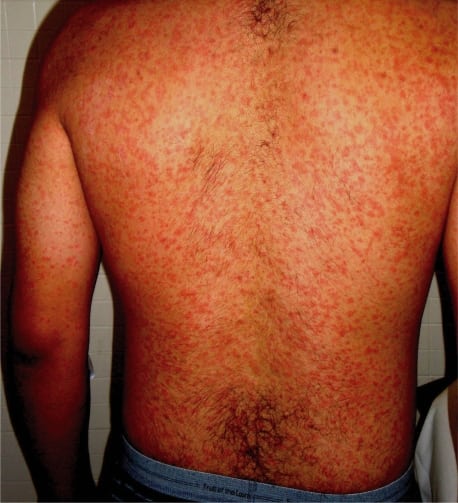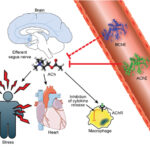Murine typhus, also known as endemic typhus or flea-borne typhus, is an infectious disease caused by the bacterium Rickettsia typhi. This bacterial infection primarily spreads through flea bites, particularly those from the Xenopsylla cheopis (oriental rat flea) that infest rodents, including rats and opossums.

Causes and Transmission of Murine Typhus
Murine typhus is transmitted when an infected flea bites a human or when flea feces contaminate skin wounds or mucous membranes. The bacteria enter the bloodstream and multiply, leading to systemic infection. The primary hosts of infected fleas include:
- Rats: Major reservoirs of Rickettsia typhi in urban areas.
- Opossums and Stray Cats: Secondary reservoirs that contribute to flea infestations.
- Fleas: The main vectors that transmit the bacteria to humans.
Risk Factors
- Living in rodent-infested areas (urban slums, crowded conditions)
- Exposure to flea-infested animals
- Warm and humid climates (murine typhus is more prevalent in tropical and subtropical regions)
- Lack of flea control measures
Symptoms of Murine Typhus
Symptoms typically appear 6 to 14 days after exposure to infected fleas. The clinical presentation of murine typhus includes:
- High fever (up to 104°F or 40°C)
- Severe headache
- Chills and muscle aches
- Maculopapular rash (typically appearing on the trunk and spreading to extremities)
- Nausea and vomiting
- Abdominal pain
- Fatigue and weakness
In severe cases, complications such as pneumonia, hepatitis, or neurological manifestations (encephalitis, confusion, or seizures) may occur
Diagnosis of Murine Typhus
Diagnosing murine typhus can be challenging due to its nonspecific symptoms. Physicians use the following methods:
- Serology Tests: Indirect immunofluorescence assay (IFA) detects antibodies against Rickettsia typhi.
- Polymerase Chain Reaction (PCR): Detects bacterial DNA in blood samples.
- Weil-Felix Test: A historical test with lower specificity.
- Blood Tests: Elevated liver enzymes and leukopenia (low white blood cell count) may be observed.
Differential Diagnosis
Murine typhus symptoms may resemble other infections, including:
- Scrub typhus
- Rocky Mountain spotted fever
- Leptospirosis
- Dengue fever
Treatment of Murine Typhus
Antibiotics
Doxycycline is the preferred treatment for murine typhus, with rapid symptom improvement within 48 hours. Alternative antibiotics include:
- Chloramphenicol (used in cases where doxycycline is contraindicated, such as in pregnancy)
- Tetracyclines (effective but should be used cautiously in children)
Supportive Care
- Fever management (acetaminophen, hydration)
- Rest and symptomatic relief
- Hospitalization (for severe cases with complications)
Prevention and Control of Murine Typhus
Flea and Rodent Control
- Pest control measures: Eliminate rodent habitats and use traps or bait stations.
- Insecticides: Use flea control products in homes and pet care.
- Personal Protection: Wear insect repellent and avoid contact with stray animals.
- Public Health Measures: Surveillance and vector control programs in endemic regions.
Global Prevalence
Murine typhus is reported in warm climates worldwide, including:
- United States: Texas, California, and Hawaii have endemic cases.
- Asia and the Pacific: High incidence in Southeast Asia and China.
- Latin America and Africa: Reported outbreaks due to poor sanitation and flea infestation.
Murine typhus is a flea-borne bacterial infection that, although treatable, requires early diagnosis to prevent complications. Effective flea and rodent control measures are essential for reducing infection risk in endemic areas. Prompt antibiotic treatment ensures recovery and prevents severe outcomes.

